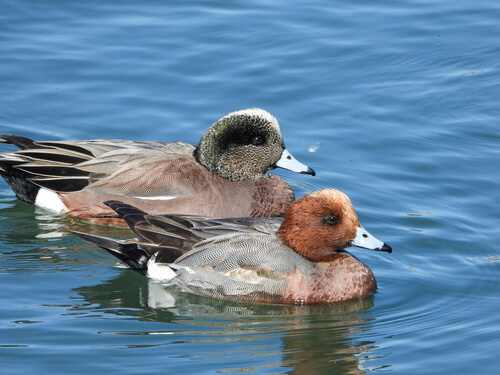Amsterdam Wigeon

Scientific Name:
Mareca marecula
Alternative Names:
Amsterdam Wigeon, Amsterdam Island Duck, Amsterdam Duck
Measurements:
| Feature | Male | Female |
|---|---|---|
| Length | About size of a thrush (approx. 20–22 cm / 8–9 in)* | Same |
| Weight | Very small, exact unknown (smaller than most ducks)* | Same |
| Wingspan | Not recorded (flightless species) | Not recorded |
*Based on historical description: “not much larger than a thrush”.
Status
Extinct. Disappeared by the late 18th century due to hunting by sealers and predation by introduced rats.
Identification
A very small, flightless duck with strong legs, reduced breastbone and wings, and a short, rounded bill similar to wigeons. It likely had brown plumage. It did not live along the coast and probably stayed inland on Amsterdam Island.
Voice
No voice records exist.
Diet
Unknown, but likely fed on freshwater plants, grasses, and small invertebrates found inland.
Distribution
Endemic to Amsterdam Island in the southern Indian Ocean. It may also have lived on nearby Saint Paul Island, but this is uncertain.
Habitat
Inland areas such as wetlands, grasses, and possibly freshwater ponds. Bones were found from sea level up to 500 m above sea level.
Breeding
Unknown. No breeding records exist, but it likely nested on the ground like other wigeons.
Wintering
Non-migratory. Stayed on the island year-round as it was flightless.
Conservation
Went extinct before it could be scientifically studied alive. Causes include overhunting by sealers, habitat damage, and introduced rats. Bones were first discovered in the 1950s and fully described in 1996.
